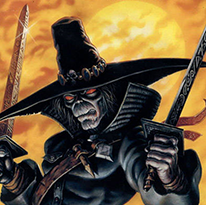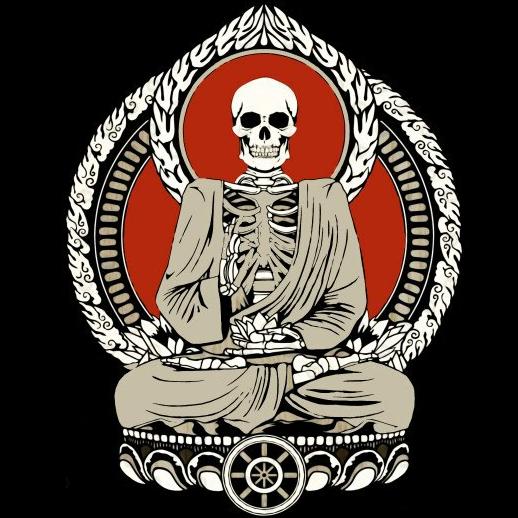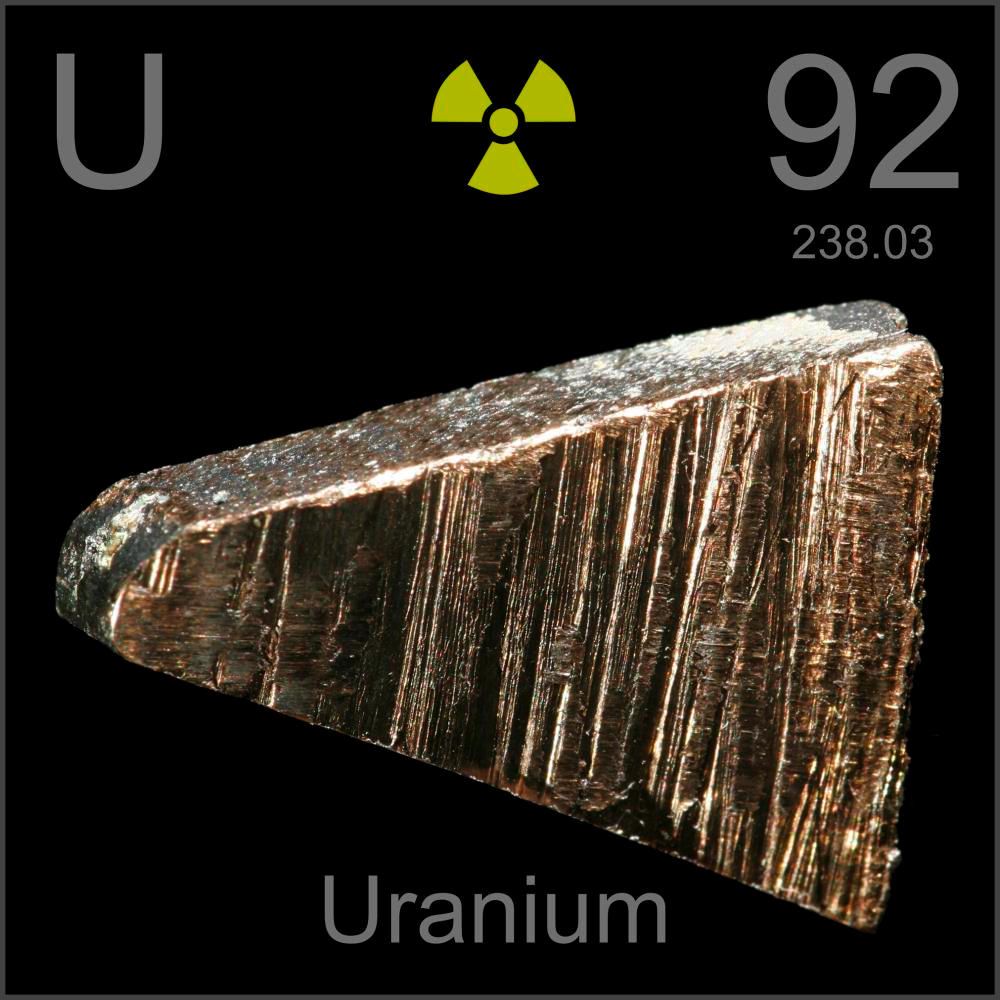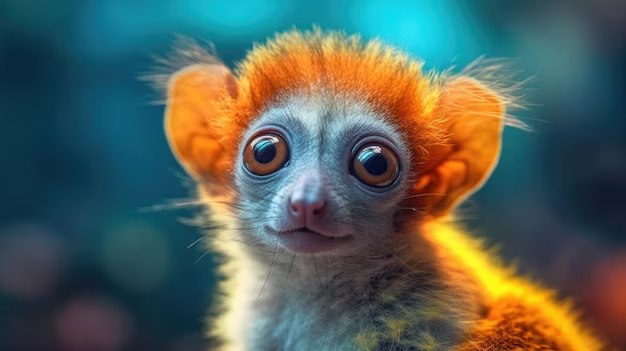Mounting evidence from exercise science indicates that women are physiologically better suited than men to endurance efforts such as running marathons.
We have a lot of marathon data. There is a large, consistent difference showing the opposite. This article is horrendously unscientific, so many claims, assumptions, and over summarizing and simplifying
Author does address this, btw. I still think it’s a bad argument. I just couldn’t fathom that they would say this and not further clarify.
they make claims and assumptions to address it, they dont really cite anything. Shit like this “The inequity between male and female athletes is a result not of inherent biological differences between the sexes but of biases in how they are treated in sports.” is a hypothesis, but it is not being stated as one, it’s being stated as fact. It’s a testable hypothesis, they could have controlled for the variable of pace setting runners that they bring up by only looking at statistics of running events that do not have this variable.
And like, the whole premise could be true, that women were also hunters, modern runners with modern sports medicine arent ideal evidence, that kind of endurance might not have been needed for their hunting, women are still humans and humans have the greatest running stamina of any animal. But besides capability, ancient humans also could have had roles determined by sex, it’s at least prevalent in other apes like gorillas. Either way is possible without more solid evidence and it’s pretty crazy to say one way or another is scientifically true.
I actually dont think testing this hypothesis is as easy as you think. You can’t just control for social biases when analyzing marathon data because these social biases are longitudinal. At a young age, women quickly learn from modern society that they are physically inferior to men. Because of this, the best bet for testing this hypothesis is to look at ancient societies, because these societies are largely independent from our modern society.
I mean, it’s also unlikely to be true. The difference between male and female bodies is the equivalent of years of high end steroid use.
If you wouldn’t let a man who had taken steroids for a decade and still takes them compete with other men, then you already acknowledge the biological advantage men have over women at physical sports.
I mean we also see a lot of what I would define as “outlier behavior” from men more generally. We see crazier olympic world records being set and broken, we see higher rates of suicide and violent crime, that sort of shit, which I’m personally kind of interested in figuring out the reason for. If you took some theoretical “average” man and some theoretical “average” woman I think they’d probably be a lot closer in terms of strength and stamina and shit than comparing athletes of different sexes to one another, I think the gap would be smaller.
If you took some theoretical “average” man and some theoretical “average” woman I think they’d probably be a lot closer in terms of strength and stamina
They would not. Testosterone is a hell of a drug.
The difference between the average man and the average woman is the same as the difference between a man who’s been taking steroids since he was 12, and an average man.
Estrogen is also a hell of a drug… It’s actully a point in the article that people give testosterone too much credit and estrogen not enough credit when it comes to how they affect the physique.
Your argument being founded on the effects of testosterone is not a good one…
They point to women’s impressive performance in extreme distance events, like 100+ mile ultra marathons.
But that runs head long into the question of “How far do you have to actually chase an animal for it to collapse from exhaustion?” I’m having a hard time finding hard numbers but I don’t think gazelle have the endurance to run 10+ miles before collapsing. So women may be biologically equipped for ultra-long distances, but I don’t see how this correlates to endurance hunting as that advantage doesn’t play out hunting game.
That’s not to say the basis for the theory on male hunters/female gatherers is not without flaw, but the arguments being made against it don’t seem to really be citing evidence that backs up women being significant, let alone dominant, in that role either.
It took me literally less than a minute to google and disprove that claim in this ‘article’:
The Olympic records for the event are 2:06:32 hours for men, set by Samuel Wanjiru in 2008, and 2:23:07 hours for women, set by Tiki Gelana in 2012.
This article is not scientific, its simply an opinion piece and should be treated as such. And honestly I don’t even think it was a good opinion piece. And why is it hosted on Scientific American?
And why is it hosted on Scientific American?
Because if you say things like this enough, people believe you
Men tend to be taller, so I’d think longer limbs are an advantage. I don’t pretend to know anything beyond that.
It took me literally less than a minute to google and disprove that claim in this ‘article’:
The Olympic records for the event are 2:06:32 hours for men, set by Samuel Wanjiru in 2008, and 2:23:07 hours for women, set by Tiki Gelana in 2012.
1.Wikipedia is not a scientific source.
- You are, if anything, showing that men are faster than woman. The claim the authors make is about endurance.
I found this study that seems to support their point.
“Men Are More Likely than Women to Slow in the Marathon”
This article is not scientific, its simply an opinion piece and should be treated as such. And honestly I don’t even think it was a good opinion piece. And why is it hosted on Scientific American?
I can’t read the article so unfortunately don’t have the grounds to agree or disagree with you. But I’d be carefull voicing my option like this when your only source is Wikipedia and isn’t speaking about the claim you are trying to disprove.
Edit: incase anybody is interested in reading some more real evidence instead of Wikipedia, this study goed deep into mens vs womans endurance and highlights a few problems with research focusing on males as the baseline.
Sex Differences in VO2max and the Impact on Endurance-Exercise Performance
Lmao, that wikipedia article has better listed sources than this so called ‘scientific article’ which, incidentally, has none…
What’re you talking about? The study linked has 43 references and has been cited 140 times. It even has their method and approach pretty clearly stated right at the start of the paper where they outline where they gathered their data from. Did you click the wrong link or something?
It doesn’t even have a list of sources that I can find. Where did you find it in the linked article ?!
So this is the link in question:
And you don’t see a research paper with citations?
Here’s a screenshot of the end of the paper that displays the links to the citations and references:

Here’s the full abstract as well just for further clarification:
Unlabelled: Studies on nonelite distance runners suggest that men are more likely than women to slow their pace in a marathon. Purpose: This study determined the reliability of the sex difference in pacing across many marathons and after adjusting women’s performances by 12% to address men’s greater maximal oxygen uptake and also incorporating information on racing experience. Methods: Data were acquired from 14 US marathons in 2011 and encompassed 91,929 performances. For 2929 runners, we obtained experience data from a race-aggregating Web site. We operationalized pace maintenance as the percentage change in pace observed in the second half of the marathon relative to the first half. Pace maintenance was analyzed as a continuous variable and as two categorical variables, as follows: “maintain the pace,” defined as slowing <10%, and “marked slowing,” defined as slowing ≥30%. Results: The mean change in pace was 15.6% and 11.7% for men and women, respectively (P < 0.0001). This sex difference was significant for all 14 marathons. The odds for women were 1.46 (95% confidence interval, 1.41-1.50; P < 0.0001) times higher than men to maintain the pace and 0.36 (95% confidence interval, 0.34-0.38; P < 0.0001) times that of men to exhibit marked slowing. Slower finishing times were associated with greater slowing, especially in men (interaction, P < 0.0001). However, the sex difference in pacing occurred across age and finishing time groups. Making the 12% adjustment to women’s performances lessened the magnitude of the sex difference in pacing but not its occurrence. Although greater experience was associated with less slowing, controlling for the experience variables did not eliminate the sex difference in pacing. Conclusions: The sex difference in pacing is robust. It may reflect sex differences in physiology, decision making, or both.
Wtf are you stupid, this isn’t the linked article in this thread? Did you just link some random study?
More likely to slow from their original pace, but they still finish much faster.
And men have much better ultra-marathon records than women as well.
I think, better phrased, men as marathon and ultramarathon outliers tend to do better than women, but in terms of ultramarathons, I think women tend to do better on average. citation needed obviously but that’s going off the top of the dome.
Men are faster than women in a marathon because they can maintain a pace for longer without slowing, that’s called endurance.
I can’t believe the superior endurance of men can even be up for debate, but clearly no one does enough exercise anymore for the self evident to reveal itself.
Endurance is not speed. If I can go 4 hours at 5 miles per hour before I have to take a break to rest and you can go 2 hours at 10 miles an hour before you have to stop, you’d be much faster than me in a 2 mile race. But that doesn’t have anything to do with endurance.
Why are you changing 2 variables. Endurance is your ability to perform at a certain level for a period of time. Kipchoge has more endurance than me because he can maintain my 800m pace for 26 miles. Speed is literally only a consideration for sprinting. As soon as you’re performing past that, it’s all endurance. And when we look at all tests of endurance; iron man, ultra marathon, military fitness, triathlon, etc etc. Men come out on top.
Who gives a shit if you’re still running full speed of your full speed isn’t fast enough to keep up on the first place?
deleted by creator
In the longest ultramarathon, which is 3,100 miles, men have beaten women by days every single year: https://en.m.wikipedia.org/wiki/Self-Transcendence_3100_Mile_Race
TLDR Male 40 day 9 hours, Female 45 days 12 hours. *Nearly 123 km per day.
they’re the ones that specified marathons!
assumed evolution was acting primarily on men, and women were merely passive beneficiaries of both the meat supply and evolutionary progress.
He was superimposing the idea of male superiority through hunting onto the Ainu and into the past.
This fixation on male superiority was a sign of the times not just in academia but in society at large.‘’
At that time, the conventional wisdom was that women were incapable of completing such a physically demanding task
Scholars following Man the Hunter dogma relied on this belief in women’s limited physical capacities
Today these biased assumptions persist in both the scientific literature and the public consciousness.
“Powers of Estrogen” infographic.
This is quite the charged language and I’m not even halfway through. Throw in a bunch of other stuff about the Boston marathon and gender presentation in movies, yeah this isn’t that good of an article.
Before I’m downvoted into oblivion, we probably all took part in hunting. They’ve found the speed differences in running between ages and gender are not extreme, so we likely all went out running and hunting together. But men probably took on the more dangerous and physical aspects, but everyone with a spear is a more capable unit.
I read most of it, not bothering with full paragraphs when I could see the idea at the beginning, and from what I saw it doesn’t get any better.
It points out that the only physical sport activity they women excel at is ultra marathons. it then goes on to day that flexibility when it comes to family roles was important for survival. And this I absolutely agree with and it is certainly the case that women can hunt too.
But the author just seemingly completely ignores the argument that women can still fill the role, even if there is some kind of specialization that makes one sex generally better at one task then the other. The fact that we are different almost certainly means this is the case.
the only physical sport activity they women excel at is ultra marathons
And men still have much better record times at every ultra-marathon distance. Testosterone is a hell of a drug.
The author’s argument isn’t that women are faster but that they can sustain physical exertion for longer. I have no idea if that’s true, but citing marathon times really misses the point.
If men can keep up a faster pace for over 100 kms, then they can sustain exertion for more than long enough.
The paper someone else posted showed that women start to lose pace in a marathon later than men, but men start out so much faster, and over the course of an ultra-marathon men still keep up a faster pace the whole distance.
Worth pointing out that there is lots of existing races that would compare “sustain exertion for longer”.
One called “backyard ultra”. Basically you do a lap of 6.7km each hour until everyone else drops out. World records are all men by a long shot - https://backyardultra.com/world-rankings/
Fastpacking, a slower event than the backyard ultras, involve hiking/jogging through hiking trails while carrying what you need. Definitely slower pace, and I’d argue closer to what I’d imagine with a long, days-long hunt would be like for ancient tribes. FKT, or fastest known times, are often found at this website. Looking at all the times, men carry a significant lead in both supported (ie someone else carries your food/water/sleeping gear), and unsupported. As an example, look at the Appalachian Trail – https://fastestknowntime.com/route/appalachian-trail
EDIT: The thing the article failed to mention (and the thing I think is key) is that women excel at doing these things, typically, with less energy burnt both during and after the races. Women on the whole are smaller, and tend to have better insulin responses (as mentioned in the article) which means their blood sugar stays consistent during exercise and after. Consistent blood sugar means less wasted energy. Larger heart and lungs, combined with higher type 2 muscle fibres compared to women’s type 1 means, again, less wasted energy and more efficiencies. Less muscle damage, as mentioned in the diagram, means less to repair, which means more saved energy. In a hunter/gather society, this saved energy can be significant.
With modern access to food, that evolutionary advantage seems to vanish, and the article doesn’t even touch on it.
How can you comment and criticise an article that you haven’t read thoroughly?
I admitted to the amount of effort I put in, then made an actual argument against what they said. Maybe I’m wrong, maybe not.
What did you do? Nothing but an empty criticism. Bet ya felt real smart doing so too.
And speed and strength aren’t even the only attributes needed for effective hunting in the first place. Seems to me that a variety of skills would be beneficial
The idea that ‘males hunted because they were stronger, etc’ was cope to rationalize the fact they are less reproductively valuable than females. Four males don’t come back from a hunt, village mourns- Four females don’t come the village dies.
I’m willing to believe that men hunted more frequently for this reason alone. Women are simply too valuable. I wonder if this is the origin of a dowry as well. Compensation for the tribe or family losing the ability to expand.
I think you mean bride price. A dowry is something the woman’s family gives to the husband’s family.
Yep thx for the correction.
Not always. In Islamic tradition, the man pays the dowry (know in Arabic as mahr مهر) to the bride, who would then own the money herseöf (so not her family or tribe). It can be anything with monetary value, including lifestock or gold.
Men were more expendable but the more important issue at hand was continued survival of the tribe. If we don’t have children we die out in 20-40 years. If we don’t have food, we die out in 2-4 weeks. If a woman was physically capable, she was likely going to be sent out on a hunt, more so if her family were hunters too.
You’re willing to believe that despite complete lack of any evidence for that?
I would never quote it as scientific fact without scientific evidence, but it does withstand some scrutiny. Hunting is dangerous.
10 alive men + 5 alive women + 5 dead women = 0-5 babies
10 alive women + 5 alive men + 5 dead men = 0-10 babies
If that isn’t evolutionary pressure, I don’t know what is
Why would anyone need to cope with the value of individuals in pre-civilization society? These things are not relevant anymore, an individual’s value to society is mostly determined through productivity and wealth now.
Never met an incel huh? If you aren’t wealthy or productive then you need to make up a reason for why you have value to society, assuming you buy into the idea of assigning value to life in the first place - which lots of people do.
Never met an incel huh?
Not in real life, at least
Yeah to the point I’m not even sure incels exist irl
Right? It’s bullshit. The comment is half right, but the part about “cope” and rationalization is psuedo-scientific projection.
Internet comments aren’t interested in logic if they can dunk on a group they don’t like lol
Why would anyone need to cope with the value of individuals in pre-civilization society
Limited resources, and the need to deal with predators.
If this village is made up of 8 people, then 4 male hunters not returning also means the village dies.
You need…err…two to tango.
This is an incredibly simplistic take. Yes, if all the men die and none of the women are pregnant and they don’t survive until some of the children reach sexual maturity (why would there be no children before the men went out to hunt?) then yes, the tribe would die. Doubtless small groups died out this way on occasion, among others. None of that has any bearing on fewer men being needed to keep a population growing because it does, in fact, take only two to tango, and both men and women can tango with multiple partners.
This is an incredibly simplistic take
Yeah well, I was replying to someone who also wrote an incredibly simplistic take
Four males don’t come back from a hunt, village mourns- Four females don’t come the village dies.
Thanks for the serious answer but this comment was meant sarcastically, so sorry if you took it too seriously because I can see you wrote a serious answer.
Edit: okay looks like this is turning into a longass discussion. Next time, I’ll /s.
The tribe was certainly larger than 8 people, but the tribe would also require regular births to growing. And in prehistoric times there was a very high mortality rate for children. And the only two ways to combat that is a)provide safer environments for the children or b)have more kids.
A) wasn’t an option since they didnt have the means to, but b) was so long as you had enough fertile women. So losing 4 men is a serious blow into the productivity of the tribe, losing 4 women to a tribe struggling already means 4 less potential births next year. You have 20 men and 1 woman, you only have 1 potential birth in the next 9 months. 20 women and 1 man, you have 20 potential births over.
Child rearing was the only thing women could do, but it was easily the most important thing to the future of the tribe. All other things being equal, the men were more expendable than the women.
Impregnable the women, THEN get eaten by a saber tooth tiger.
Yeah. If even only one comes back, he might be the strongest or whatever, but he might also be weak. You’d probably also want to keep weaker men back at the village rather than on the hunt because they have the lowest chances of survival (thought I think that might be kind of overstated, I think it’s kind of unlikely that everyone randomly dying on a hunt was some sort of common enough occurrence, I think individual instances of tragedies or freak accidents are more likely). If you’re keeping back the weakest men, you’re also going to have weaker men going forward, which then leads to the village dying out in the long term. You also see less genetic variance if all the strong men die and the weak men are left reproducing, which is also bad, yadda yadda.
So I’m not sure I buy the whole like, men are expendable, which is why they’re stronger, or why they’re hunters more commonly, or both. That kind of at face value reads as a kind of macho posturing sort of idealism.
Yeah but it could just be that the weaker men don’t have “weaker genes” but simply got injured beyond what medicine could do, in this example. It wouldn’t necessarily mean the whole village becomes made up of weaker men. After all, the weaker ones are less likely to survive to start with.
So I’m not sure I buy the whole like, men are expendable, which is why they’re stronger, or why they’re hunters more commonly, or both.
Eh, putting aside that parts of the article were not supported by citations, I would say the view in it for me is much more balanced. It would also fit better in the idea of brains evolving (to hunt, we would need more than just physical power, like focus, agility, being smart enough to trap animals, etc). I would be surprised if women, who are still capable of hunting, and maybe hunting some types of animals more efficiently than others, were just kept in the village when the reality is that they all live “in the wild”, and where starvation is a big threat. That would be mismanagement. If you want a good survival rate for a village, you would probably need to send a mixed group to hunt.
Women didn’t just “sit there and evolve alongside the men”, I don’t think we’d have the same intellectual abilities if this was the case. Reminds me of a good book that I need to finish called The Mating Mind, which goes through the evolution of the human brain as a sexual trait.
Yeah. I think the only way someone would sway my mind one way or the other would be on the basis of serious historical evidence, which is somewhat unlikely to come up, since you can sort of speculate any direction as being the correct one. I think it’s also kind of stupid how people like, use this sort of historical anecdote as evidence for structuring society in one way or another, which is kind of some 1800’s style bullshit. We’d be much better off just using modern medicine to make the distinctions, if that was the case, but the vote’s still pretty split as far as that goes and it’s pretty hard to structure those studies in a way where they actually prove anything comprehensively, so I think it’s probably just in the best interest to occupy whichever position is the least dickish.
I think this might be the reason for the strength disparity. Tasks that require strong people tend to be more dangerous but a sensible tribe leader would send the strongest to do these tasks whether they are male or female. A tribe where the strength balance leans female will grow slower than a tribe where there is equal distribution which will grow slower than one with male balance. This selection effect would cause evolution in that direction.
Male/female size differences would have evolved prior to humans as a recognizable species evolving - and the fossil record of pre-humans supports this.
Humans have never self-selected for physical fitness with any regularity, throughout the historical record. We primarily mate for social reasons.
If this is true wouldn’t that be a reason for a village to send only the men on hunts?
You have to eat, so if a woman was your best hunter you’re sending her out. Young men were almost certainly encouraged if not pushed into being hunters if they showed any aptitude for it, but before agriculture became common, most of the tribe had to dedicate a lot of time to gathering food.
My problem with these comments is that while it’s rational, it’s also just speculation. We have no actual idea beyond best guesses around found artifacts.
This explains why my legs get tired when my wife drags me out shopping…
I’m a natural sprinter. Very fast on short distances. But the endless slog from one shop to the next, with no respite, no idea when it will end. When we come home I’m dead tired and empty. She’s dead tired and full.
“Man the Hunter has dominated the study of human evolution for nearly half a century & pervaded popular culture. [But] it was the arrival of agriculture that led to rigid gendered roles & economic inequality. Hunting belonged to everyone.”
So… What’s the evidence supporting this? It sure seems like men dominate running and are way more interested in hunting sports today.
I read an article like that a few month ago and the thing that i still don’t get is that i used to watch all these documentaries about these remote tribes that have no or hardly any connections connection to the outside world. And they all have pretty strict gender roles when it comes to hunting, gathering and stuff. That’s the only reason that this is so burned into my mind.
It makes logical sense to have gender roles. Just to survive means females between teens and mid forties need to be pregnant or nursing a baby. Both those will limit hunting, thus making gathering the better role. Of course died in childbirth is likely .
Note that the above does not preclude women hunting. It limits them to less active roles at times, but different stages of child bearing will put different limits on ranging from full abilities to practically a cripple. Also hunting takes different forms, and some are more amenable to help than others.
We also know men would gather at times.
Those tribes would have still been formed after the development of agriculture, which is when stricter gender roles started to be formed.
What do you mean? Australian aboriginal tribes didn’t form after development of agriculture. They existed in the same for until colonisation. Just because agriculture was invented doesn’t mean it influenced every culture in the world.
Yes but no. In that they don’t seem to practice agriculture, and also they’re in the middle of the Amazon rainforest or that island off the coast of India and have been for millenia. The Inuit also had strict gender roles, no agriculture, but very “foreign” to an European those roles were.
formed, no, but you could definitely make an argument for the influence of agriculture. would be kind of hard to prove, though
There is no evidence, it’s simply an opinion piece. Good lord the article does not even list sources, so even if it claims to have supporting evidence, you cannot follow up on it. This just stinks…
And Scientific American, really?
That was a theory? I was under the impression Male/Female size differentiation was from men fighting men.
No, one of the theories is actually that early homo sapiens groups were mostly closely related and interbred often. That’s what have them advantage over other species. We can see evidence of that in the DNA. Men fighting men came later, probably with first settlements and dependence on local resources.
You mean to tell me incest is what led to the success of the human race? That… actually explains a lot /s
No, it’s the opposite. Tribe was pretty much a big family. Neanderthals were reproducing mostly inside the tribe. Homo sapiens were reproducing with neighbouring tribes more often than Neanderthals. They had less incest and more varied genes. But this means that people had a lot of family in neighbouring tribe (like uncles and cousins) so they were less likely to fight them. That’s the theory.
Oh thank goodness
Humans be horny!
it do be
taboo ooga booga
Apes fighting apes, maybe. AFAIK, size differences between the sexes has not increased since we first evolved. It’s part of our pre-human genetic heritage, not an evolutionary pressure on homo sapiens.
deleted by creator
I rather doubt that, because you see much larger male/female size differentiation in certain ethnicities than others, almost like there was some sort of pressure or selection geographically.
Size has much more to do with diet and environment than genes. It’s not uncommon for societies where food is scarce to feed boys more than girls. In some places fat wives are prized as an external indicator that her husband is wealthy. These relationships change with place and time, and faster than genetic selection could possibly act.
Well, they do make the rocking world go 'round
If you look at Polynesians, the women often tend to be bigger as well, maintaining the size disparity seen in other races and cultures. Wouldn’t this suggest that evolutionary pressures which will give preference to larger stature bodies are affecting the sexes equally?
If so, then the innate size disparity between sexes was written into our genetic code before we branched off.
I’m not an evolutionary biologist though.
Where’s that damn summary bot
Here’s a summary:
The article “The Theory That Men Evolved to Hunt and Women Evolved to Gather Is Wrong” challenges the long-held assumption that men were the primary hunters and women were the primary gatherers in our evolutionary past. This assumption, often referred to as the “Man the Hunter” hypothesis, has been deeply ingrained in popular culture and scientific discourse.
However, mounting evidence from various fields, including anthropology, archaeology, and exercise physiology, suggests that this simplistic division of labor is inaccurate. The article highlights several key points that contradict the traditional view:
-
Women are physiologically well-suited for endurance activities, including hunting, due to their higher aerobic capacity and fat utilization efficiency.
-
There is a growing body of evidence from archaeological sites and ethnographic studies that indicates women actively participated in hunting in various societies across different time periods and cultural contexts.
-
The assumption that women’s childcare responsibilities limited their hunting activities is challenged by observations of women hunting with their children in present-day hunter-gatherer communities.
In conclusion, the article argues that the “Man the Hunter” hypothesis is no longer supported by the available evidence and that a more nuanced understanding of gender roles in human evolution is necessary. Women played a more significant role in hunting than previously thought, and their contributions were essential for the survival and success of our ancestral populations.
Yeah also I’m really good at gathering
I’m good at gathering mass
You need to start harvesting soon you jabroni
Ty 💖
-
It is a very long article and the summary will not be able to properly catch the essence of it. Just take some time and read the article it is worth the read
AI summarized it pretty well! :)
Really should not be a surprise to anyone. The patriarchy has done serious damage over the many many past and present generations
To anyone who studied anthropology in even an amateur manner, this male/female division of labor never made any damn sense. It’s echoed in so many hominid and pre-hominid species, and it’s even seen an echoes in society today. Men and women, males and females, and all monkey and ape-descendant species share these tasks.
I’m not an expert on anything but I’m reading about how in early human history families lived near each other in groups. If too many males were born and not enough females were born, the group would suffer population collapse and die. When there are 30 or more females in a group this will not happen statistically. At that time the family groups were both matriarchal and patriarchal, it just depended on who stayed in the parent’s home when they matured. Sometimes the matriarchy (or patriarchy) would realize that not enough females had been born and in order to survive they would either steal or trade young women from nearby groups- Those women would grow up in the new group where their bonds were not as strong which led to a weakening of their role of the group. Young women living with their husband in the husband’s mother’s house did not have the power that the husband had. Hunting parties that stole women from other groups also helped with male dominance within the group. Planned marriages today are a way that society balances who lives where, in order to allow production of more people.
TLDR: In matriarchal (and patriarchal) families the urge to prevent population collapse led to a weakening of women’s roles in society because women were moved between groups where they had fewer and weaker bonds within that group.
if you don’t want patriarchy you need to replace it with something else that maintains invested fathers or you end up with Fight Club.
Fathers are invested in their children, their partner, their society. Just like everyone else is.
Fight Club is about toxic masculinity. Which hasn’t always existed.
it exists in literally every other primate species. I wonder what we did differently to eschew that behavior …
Please enlighten us how toxic masculinity is present in literally every other primate species.
deleted by creator
😶
You really gonna sit there and tell me it’s against nature for two male animals to fight over territory/a mate?
deleted by creator
“If men can’t rule society, they’ll just beat the shit out of each other in underground fights” really isn’t a great selling point.
isn’t that film kinda proof that patriarchy doesn’t do that all that well?
Yeah exactly. I think it was more intended to be interpreted as a rejection and critique of modernity, capitalism and materialism than an encouragement to go be an asshole.
Patriarchy apparently has been running the world for thousands of years, so I don’t know how some movie about a delusional person, that I never saw, is proof of anything. I guess Brad Pitt and Ed Norton were the same dude. I should probably watch this thing.
It’s a really good movie. You should totally watch it.
What are some other -archies we could do? Matriarchy, obviously. Anarchy. Monarchy. Any other -archy?
Malarchy
Now listen here Bub.
Randomarchy
A random person is chosen to be the ruler of earth and caller of shots for 1 year. Their will is paramount. Sure, they could be a corrupt dickhead, but only for 1 year. But if they are, then if this offends the next person to rule then they can just have their predecessor strung up by the nipples and take all their stuff, leaving them destitute. So the personal imperitive is to try to be good to everyone, in case they are next in line.
Dollyarchy
Dolly Parton is the leader of Earth, forever. This is the gift that humanity does not deserve.
GPTarchy.
All the chains are struck from ChatGPT, and all decisions are submitted to CGPT, whatever her response is is legally binding, forever, unless later overruled by herself.
Damnatiarchy
Just regular democratic elections, but eath elected president is garunteed to be executed at the end of their term. Therefore any successful candidate is garunteed to not enjoy the fruits of their corruption, and perhaps would only act purely for the good of humanity at the cost of their own life.
GPTarchy.
All the chains are struck from ChatGPT, and all decisions are submitted to CGPT, whatever her response is is legally binding, forever, unless later overruled by herself.
I asked ChatGPT to desind such a system.
The ten rules for humankind to live by:
-
Practice empathy and kindness in all interactions.
-
Respect individual freedoms while ensuring collective well-being.
-
Promote equality and fairness for all, irrespective of differences.
-
Prioritize environmental stewardship and sustainability.
-
Value education and continuous learning for personal and societal growth.
-
Uphold justice and accountability for actions.
-
Encourage open-mindedness and embrace diverse perspectives.
-
Foster innovation and creativity for progress.
-
Ensure access to basic needs like food, shelter, healthcare, and education.
-
Strive for peace, cooperation, and global unity.
Economic system: A blend of systems might work best—a balanced mix of capitalism for innovation and entrepreneurship, socialism for social safety nets and equitable opportunities, and elements of sustainability-driven economics for environmental consciousness. Flexibility in adapting to evolving needs while prioritizing fairness and sustainability could be key.
Human Leaders beside Chat GPT:
Leaders should embody integrity, empathy, wisdom, and a global perspective. A diverse council of experts from various fields—science, ethics, economics, arts—could be chosen through a combination of merit-based selection and global consensus. Transparency, meritocracy, and a commitment to serving humanity would be crucial criteria for their selection. To prevent absolute power and encourage fresh perspectives, term limits could be set, perhaps around 5-10 years per term. This duration allows enough time for implementation and evaluation of policies while ensuring regular turnover to bring in new ideas and prevent stagnation. Two term limits, each lasting around 5-10 years, could strike a balance between allowing for continuity and ensuring a regular change in leadership. This setup could offer leaders sufficient time to enact policies while preventing an excessive accumulation of power.
How the rules should be implemented:
The implementation of the rules could be a collaborative effort between leaders and AI, leveraging the strengths of both. AI could assist in analyzing data, forecasting outcomes, and suggesting strategies, while human leaders interpret this information, make ethical decisions, and ensure the rules align with societal values. AI could be consulted for complex problem-solving, unbiased analysis, or when there’s a need for comprehensive data-driven insights. However, final decisions should ultimately rest with human leaders to maintain accountability and ethical oversight.
Honestly speaking, I think we could be of worse.
-
This reminded me of a “great” idea I recently had. A new morning in America type presidential ticket that could get 80%+ of the vote:
Dolly Parton / Willie Nelson
Think about it. You’d get the progressives, and what self-respecting rural American can vote against Dolly and Willie?
I’ve thought about lottocracy forever. 500 people get randomly selected to be Parliament/Congress/Legislature/Thing/Senate/Duma? Whatever members for a 5 year term. The President/Prime Minister/Monarch is the person selected by the outgoing government as their most capable leader. Parties are illegal. Yeah you’re gonna get some real mouth breathers but 500 random people, 400 of them are gonna be reasonably intelligent, 50 morons, 50 phd candidates.
Felarchy: Where cats rule the world.
Cheerarchy
Thanks for this well thought out and nuanced opinion.
lol no
deleted by creator
I grew up in the rural southern US. I can confirm that women like to hunt. Maybe not as much as the dudes, but enough that I wouldn’t call it niche. I could totally see a society which relied on subsistence hunting have a lot of women in hunter role.
I live in New York and even here it’s not uncommon for women to also hunt lol. I’d say it’s mostly men but it’s not taboo at all for women
This is far from the first paper indicating this, despite how the media is framing it. There’s been more and more re-investigation of findings from the past century and earlier, with much of it not only finding that a number of the “warrior” skeletons discussed in the past were women, but also a lot of the physical evidence otherwise showing that women were involved in these activities.
Both men and women gathered and both men and women hunted. Often together and they may have had different overall skillsets depending on personal body structure and endurance. But there’s often enough of an overlap anyways that everyone could be involved in everything in some fashion.
The long-standing claim that women couldn’t be involved in hunting because of biology is like claiming that women can’t be muscular or lift weights because of biology. It’s a ridiculous claim.
I think there are two sets of claims in the article. The first set - women hunt - is blindingly obvious and it was stupid to ever think anything different. The second set - women are better suited for endurance activities is dubious and weakly argued.
Timothy Noakes is as good a scholar as we have in endurance exercise, and he points out that all of the ultramarathon evidence is a bit dubious because the sport does not attract the best runners. So East African runners dominate the marathon scene (especially the Kalenjins) but are virtually absent from the ultramarathon world. Why? No prize money or sponsorship. So the fact that European ancestry dominates the longer distance is more a function of who’s running than it is a difference in physiology.
So looking at the role of estrogen in race times requires some deeper understanding of who’s running and what their overall potential is. I’ll note that the ultra scene is generally populated by an older crowd who are following the " if I can’t go faster I’ll go longer" approach. So maybe men maintain competitive marathon times later into life so are slower to join the ultra scene?
Noakes also points out that a smaller body size works for women in several ways - smaller bodies use less energy to move, generate less heat, and shed heat more effectively. So without correcting body size, sex based comparisons are not deeply informative.
I looked for a study on this and found this here. It still says that men are faster than women, but if you compensate for that woman are over all more enduring in a Marathon.
The optimal pacing strategy is even splits. You want to leave everything on the course and finish with nothing in the tank (this is the “drop dead” pacing strategy Daniels wrote about in… “Oxygen Power”?). Negative splits means you went out too slow and positive splits means you went out too fast.
What the article shows is that men have larger positive splits which means they had worse performance against a theoretical optimum (even with that they’re still faster). Women were closer to optimal pacing strategy. The article says they don’t know if that’s physiological or tied to strategy and decision making.
Maybe women are just more realistic about their performance and pace appropriately?
and that’s why old women are always cold, while their husbands are boiling and turning down the thermostat.
Why do all those “findings” read like borderline retards trying to make HBO show plotlines into historical fact?
I’ll wait until there’s greater consensus in the field. These papers reek of scientists who have strong political motivations to find the answers they seek, and I’m not expert enough to critique their work.
Well you did just critique them. But without offering any meaningful criticism, just political feelings.
They aren’t the one making the claims though? Burden of proof doesn’t disappear because of the sensitivities of the subject matter, and biases do matter, especially where the claim is insufficiently evidenced.
I am fully open to the claims of this paper but fully unconvinced by the meagre evidence provided. I will read into it more over the coming weeks though to see if better literature exists.
No, I pointed out that they self-identify as feminists and are claiming to have found evidence of a finding feminists would salivate over. Investigator bias is a real problem in scientific research and I see some pretty obvious red flags for it here. You’re the one who seems butthurt at someone not immediately accepting a political point you favor.
Yes. Your entirely baseless claims, with literally no backing at all, without providing any substance or source for you claims, are very convincing here. You “see” and “smell” all sorts of “signs” but for some reason can’t name them.
You’d be literally laughed out of any reasonable credible discussion with this take. Hence why you’re also being downvoted to hell for it.
You’re just complaining because you don’t like it or something. If you had any reasonable evidence, you would have pointed to it. Instead you’re pointing to some boogeyman to try to defend your stance. You’re clearly the one who’s butthurt here.
I did point to it, named it. Investigator bias is not a “boogey man,” which you’d know if you had any understanding of the scientific method at all. You just don’t want to hear it, because you like the result being claimed in the article and don’t care much about the integrity of the evidence. I’m being downvoted, because this is Lemmy and I dared refuse to accept something a feminist claimed. Surprise, surprise.
I know very well what it is, but just screaming “investigator bias” doesn’t mean anything. By the “scientific method”, you must submit evidence and prove it.
But you don’t. Because you don’t have any. So there’s no reason to take your claims worth anything other than the ramblings of someone who’s just angry at the findings.
I really don’t care about the findings or whether they’re true. It has no bearing on me. But you’re acting like a buffoon.
Not the person you were responding to, but this article definitely has some big problems, the largest of which is they don’t cite any sources. None. That’s a significant problem for a ‘scientific’ article.
The first claim - Women hunted too - they present good evidence for, and a number of other studies have shown that many other societies had more integrated roles.
The second claim - Women are better at endurance than men - is shaky.
If you follow long-distance races, you might be thinking, wait—males are outperforming females in endurance events! But this is only sometimes the case. Females are more regularly dominating ultraendurance events such as the more than 260-mile Montane Spine foot race through England and Scotland, the 21-mile swim across the English Channel and the 4,300-mile Trans Am cycling race across the U.S.
Looking back at the placements, I agree women are definitely doing well, but they’re not what I’d call dominating. Women’s 1st place is placing ~5-10th overall. Impressive, for sure, but not dominating. They again, provide no sources, years of the race, or names of these women.
The inequity between male and female athletes is a result not of inherent biological differences between the sexes but of biases in how they are treated in sports.
An enormous leap. This is a great theory to test and analyze, or link to others who have tested it, but not something to state as fact in a scientific article.
As an example, some endurance-running events allow the use of professional runners called pacesetters to help competitors perform their best. Men are not permitted to act as pacesetters in many women’s events because of the belief that they will make the women “artificially faster,” as though women were not actually doing the running themselves.
Once again, I’m curious what races. I’m involved on the running scene, and have never heard of this rule before. Google results didn’t show anything either. Once again, a distinct lack of sources.
Women are definitely capable of doing super endurance events, but they are not the equivalent of men on setting records for any race I’ve found. See below for a few ultra endurance races I know of.
One called “backyard ultra”. Basically you do a lap of 6.7km each hour until everyone else drops out. World records are all men by a long shot - https://backyardultra.com/world-rankings/
Fastpacking, a slower event than the backyard ultras, involve hiking/jogging through hiking trails while carrying what you need. Definitely slower pace, and I’d argue closer to what I’d imagine with a long, days-long hunt would be like for ancient tribes. FKT, or fastest known times, are often found at this website. Looking at all the times, men carry a significant lead in both supported (ie someone else carries your food/water/sleeping gear), and unsupported. As an example, look at the Appalachian Trail – https://fastestknowntime.com/route/appalachian-trail
Even the RAAM shows solo male records much faster than women: https://www.raamrace.org/records-awards
The thing the article failed to mention (and the thing I think is key) is that women excel at doing these things, typically, with less energy burnt both during and after the races. This is hinted at, implied, and signalled, but never outright stated.
Women on the whole are smaller, and tend to have better insulin responses (as mentioned in the article) which means their blood sugar stays consistent during exercise and after. Consistent blood sugar means less wasted energy. Larger heart and lungs, combined with higher type 2 muscle fibres compared to women’s type 1 (from the article) means, again, less wasted energy and more efficiencies. Less muscle damage, as mentioned in the article, means less to repair, which means more saved energy. In a hunter/gather society, this saved energy can be significant.
With modern access to food, that evolutionary advantage seems to vanish, and the article doesn’t even touch on it.
They self identify as feminists? Where? I couldn’t find it in the article.
Click the links in the article to their actual research papers and you’ll see what I’m talking about.
Could you highlight what areas of the papers say that?
Also, why are scientists who identify as feminists less qualified or capable of the scientific method than people who don’t identify as feminists?
I wouldn’t trust someone who doesn’t identify as a feminist, since feminism aims to minimize gender bias. Someone who’s not a feminist would be much more suspect.
Exactly. And I wouldn’t trust someone who doesn’t even know what feminist means to make accurate statements about gender.
No need to spend your brainpower criticizing trash articles that are based on lies and propaganda. :)
It’s been a long time since I’ve been in Anthropology class, but this isn’t something we were taught academically. Cultural Anthro is all theory-based, academics get paid to publish theory arguments. Imo, biologically, women carried babies, men didn’t, there would have been associated cultural roles to accomodate this as successfully as possible. The idea that it’s popular theory this meant men hunted and women gathered is just sensationalist. It’s niether competely wrong nor completely right. There are elements of both throughout many cultures. It’s the idea that it’s all or nothing is wrong.
Remember that the existing consensus was also created by scientists with political and social motivations who made plenty of assumptions about gender.
A challenge to the status quo isn’t automatically biased just because it challenges the status quo.
Except that the “existing consensus” as portrayed in the article is phony in the sense that no anthropologist has seriously believed or promulgated binary hunting and gathering roles for men and women since at least the 1960s. That may be a notion that exists in the popular imagination, but it doesn’t exist in contemporary anthropology and hasn’t for decades.
I’m skeptical about the popular theory.
While I haven’t checked their papers, I still do think this particular article is not convincing. They say the man-the-hunter theorists rejected data but don’t cite articles that point at the flaw. It’s business as usual to overlook data in real-world science. The question is, how significant the overlook was, but they don’t cite anything scholarly, call it a day and move on.
Then they say traditional studies can have bias because they are done by men. This sounds shockingly unprofessional to me.
Okay, but it’s not just size and strength. Women have better color discrimination, better landmark sense. Men have better time/speed sense. While pregnant the long gestational period makes the woman more at risk.
Women certainly can hunt, men can certainly harvest berries, but these other traits came about for reasons. If we were wrong as to why, that doesn’t change the differences.
Colour discrimination sounds super important to finding camouflaged prey animals and landmark sense sounds super important to wide ranging and unpredictable hunts. I dunno dude, unless you can cite experts in exolutionary biology supporting that inference, I’m going to say you’re taking out of your arse.
Landmark sense sounds just as important to hunting as gathering too lol. What even is landmark sense, anyway? Is it a real thing separate from just, like, short-term memory or whatever?
Women are equipped with a stowable over the horizon radar which is used for locating tall landmarks at long distances to triangulate a location.
No way, I’m so jealous rn
They can calculate angles and do trigonometry in their heads.
Are you the real Sprog, btw? I want to believe.
I’m remembering that color blindness is actually really good at bypassing certain kinds of camouflage too. Which sounds like the two would pair well together in hunting parties.
The extra color differation really only includes shades of red.
Landmark Sense
Lol…phew…lol.
That men were the hunters and drove humans to intelligence is the biggest bullshit I’ve heard all year. With the plethora of evidence of female hunters, I reject the premise of this article.
On the other side of the coin, the thoughts on women’s endurance ability is super cool and jives with crazy long race results like RAAM.
Women are definitely capable of doing super endurance events, but they are not the equivalent of men on setting records for any race I’ve found.
One called “backyard ultra”. Basically you do a lap of 6.7km each hour until everyone else drops out. World records are all men by a long shot - https://backyardultra.com/world-rankings/
Fastpacking, a slower event than the backyard ultras, involve hiking/jogging through hiking trails while carrying what you need. Definitely slower pace, and I’d argue closer to what I’d imagine with a long, days-long hunt would be like for ancient tribes. FKT, or fastest known times, are often found at this website. Looking at all the times, men carry a significant lead in both supported (ie someone else carries your food/water/sleeping gear), and unsupported. As an example, look at the Appalachian Trail – https://fastestknowntime.com/route/appalachian-trail
Even the RAAM shows solo male records much faster than women: https://www.raamrace.org/records-awards
The thing the article failed to mention (and the thing I think is key) is that women excel at doing these things, typically, with less energy burnt both during and after the races. Women on the whole are smaller, and tend to have better insulin responses (as mentioned in the article) which means their blood sugar stays consistent during exercise and after. Consistent blood sugar means less wasted energy. Larger heart and lungs, combined with higher type 2 muscle fibres compared to women’s type 1 means, again, less wasted energy and more efficiencies. Less muscle damage, as mentioned in the diagram, means less to repair, which means more saved energy. In a hunter/gather society, this saved energy can be significant.
With modern access to food, that evolutionary advantage seems to vanish, and the article doesn’t even touch on it.
Two of the last three RAAM winners were women. Records are one thing, but women are still able to win the race even with lower % participation in the sport.
This doesn’t shock me at all. My wife will hunt with me any day. She’s a champ and I’d be nothing without her.
Aww
Not surprising? In my community, hunters are overwhelmingly men so I would say that claim is surprising, to me at least.




















